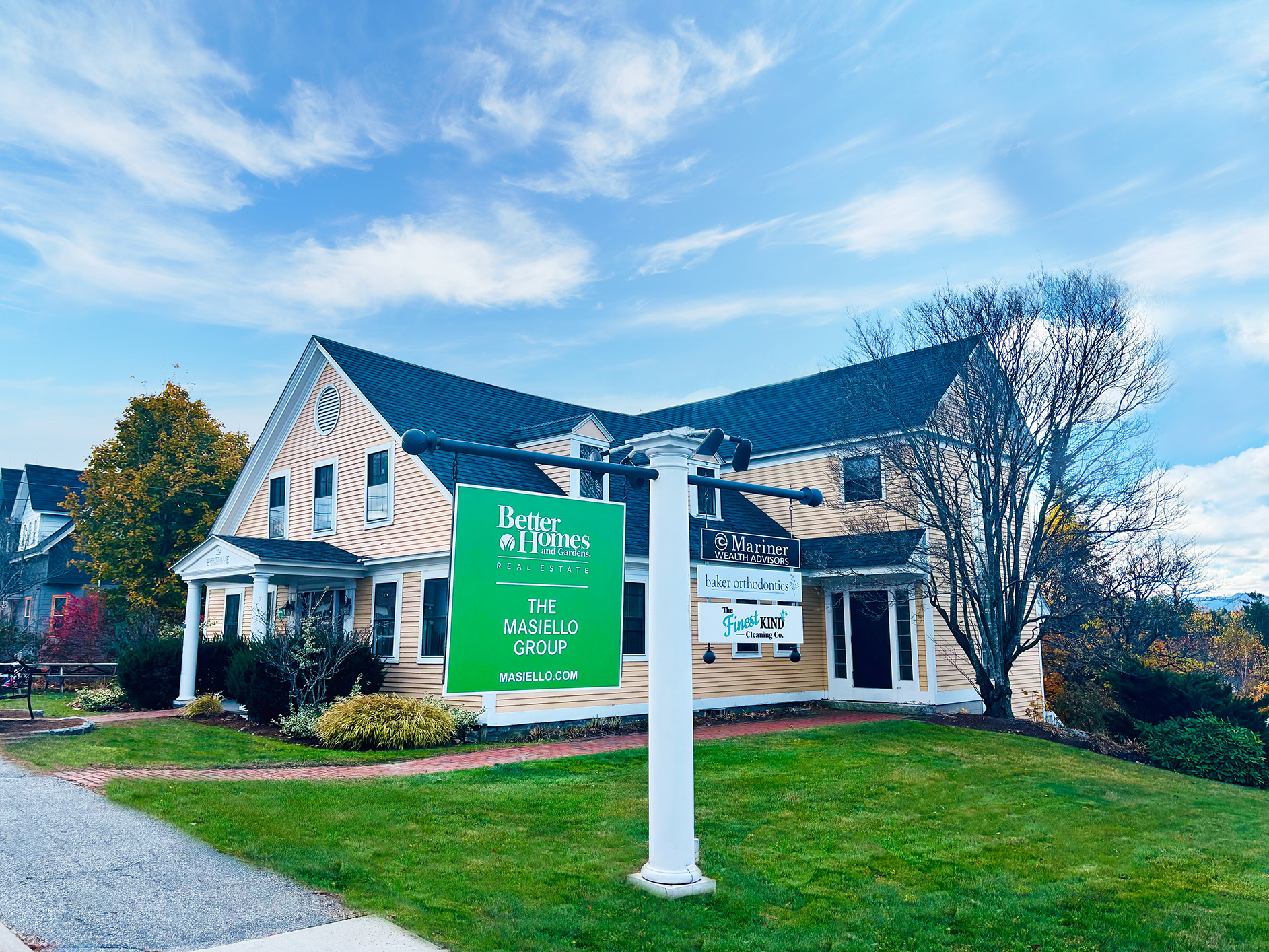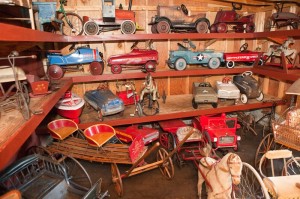Located in Merrimack and Sullivan counties, with shoreline in the towns of Sunapee, New London and Newbury, Lake Sunapee…
- Is the 5th largest lake located entirely within the State of New Hampshire
- Is approximately 8 miles long
- Is 142’ deep at its deepest and 1,093’ above sea level
- Has eight islands
- Has approximately 70 miles of shoreline
- And driving distance of about 25 miles around
- Has 3 lighthouses which are on the National Register
- Has 6 boat ramps, 7 sandy beaches, and exceptionally clear and pure water.
Historically, the Lake, after the B & M Railroad brought a stop to Newbury, was a destination for summer guests from the Boston area, and elsewhere. Numbers of steamboats ferried the visitors from landing to landing, delivering them to various large resorts or cottages on the Lake. The biggest steamer to ever sail on Lake Sunapee was the 101’ Armenia White which was launched in 1887 and was capable of carrying 650 passengers.
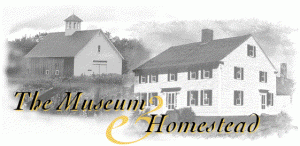 Located in North Sutton, in the New London/Lake Sunapee area of New Hampshire, and just 10 minutes down the road from New London, is this wonderful 18th century historic homestead with restored farm buildings and a Bicentennial working farm, tucked away off the beaten path. On its 250 acres of fields and woods, there are fruit, flower and vegetable gardens, seasonal events, hiking, ski touring and snowshoeing. The Farm is open daily, year-round. From their web site, “The Musterfield Farm Museum was established for educational purposes to promote and encourage the history of New Hampshire agriculture and early architecture.” Its four major attractions include the Matthew Harvey Homestead, which is listed on the National Register of Historic Places; a collection of historic farm buildings; a working farm; and a superb, scenic location between Mount Kearsarge and King Ridge. Throughout the year, there are a number of events held which highlight the rural traditions of New Hampshire agricultural life. These events are entertaining and fun and suitable for all members of the family. Similar and perhaps of interest might also be the New Hampshire Farm Museum which is located in Milton, where visitors “…can observe actual farm life skills and practices of the 1890s with guided tours.” Visit their site at: NH Farm Museum Also the Stonewall Farm: a Working Farm and Educational Center which is “…dedicated to promoting the importance of local agriculture and the stewardship of natural resources.” Stonewall Farm Visit their website at: Muster Field Farm MuseumEssay writing is an important aspect to any students’ education and is required at every level whether you are attending high school, an undergraduate program, or graduate program.
Located in North Sutton, in the New London/Lake Sunapee area of New Hampshire, and just 10 minutes down the road from New London, is this wonderful 18th century historic homestead with restored farm buildings and a Bicentennial working farm, tucked away off the beaten path. On its 250 acres of fields and woods, there are fruit, flower and vegetable gardens, seasonal events, hiking, ski touring and snowshoeing. The Farm is open daily, year-round. From their web site, “The Musterfield Farm Museum was established for educational purposes to promote and encourage the history of New Hampshire agriculture and early architecture.” Its four major attractions include the Matthew Harvey Homestead, which is listed on the National Register of Historic Places; a collection of historic farm buildings; a working farm; and a superb, scenic location between Mount Kearsarge and King Ridge. Throughout the year, there are a number of events held which highlight the rural traditions of New Hampshire agricultural life. These events are entertaining and fun and suitable for all members of the family. Similar and perhaps of interest might also be the New Hampshire Farm Museum which is located in Milton, where visitors “…can observe actual farm life skills and practices of the 1890s with guided tours.” Visit their site at: NH Farm Museum Also the Stonewall Farm: a Working Farm and Educational Center which is “…dedicated to promoting the importance of local agriculture and the stewardship of natural resources.” Stonewall Farm Visit their website at: Muster Field Farm MuseumEssay writing is an important aspect to any students’ education and is required at every level whether you are attending high school, an undergraduate program, or graduate program.
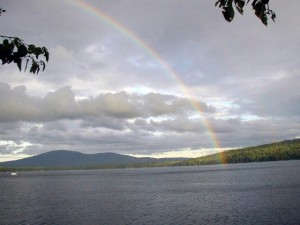 Factually speaking, Pleasant Lake is a 606-acre lake located in Merrimack County in central New Hampshire, in the town of New London. The village of Elkins is located at the east end of the lake, next to its outlet. Water from Pleasant Lake flows east to the Blackwater River, a tributary of the Contoocook River and ultimately the Merrimack River. Its primary inflow is Great Brook.
Factually speaking, Pleasant Lake is a 606-acre lake located in Merrimack County in central New Hampshire, in the town of New London. The village of Elkins is located at the east end of the lake, next to its outlet. Water from Pleasant Lake flows east to the Blackwater River, a tributary of the Contoocook River and ultimately the Merrimack River. Its primary inflow is Great Brook.
These facts, however, hardly communicate the beauty (moon- and sunrises over Mt. Kearsarge), sparkling clear waters (a Class “A” lake), fun fishing, sailing, water-skiing (and other varieties of water-sports), swimming lessons at the town beach, fireworks on the 4th of July, and on and on.
View some wonderful pictures at the Pleasant Lake Protective Association’s web site: Pleasant Lake Photo Gallery and explore more information about this wonderful resource: a place for recreation, education, and protection.
Pleasant Lake Protective Association
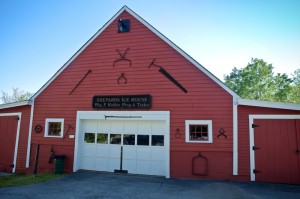 What’s an “Ice House”? Quite literally, it’s the building where blocks of ice were stored, layered with sawdust, to be delivered to those people lucky enough to have an “icebox” to keep their food chilled. In this case, while there is an “Ice House” building, this small, hands-on, children-friendly museum offers much, much more than just the opportunity to see a lot of ice-cutting and handling tools.
What’s an “Ice House”? Quite literally, it’s the building where blocks of ice were stored, layered with sawdust, to be delivered to those people lucky enough to have an “icebox” to keep their food chilled. In this case, while there is an “Ice House” building, this small, hands-on, children-friendly museum offers much, much more than just the opportunity to see a lot of ice-cutting and handling tools.
The Ice House is a living, working legacy to the New London, NH, area from Bill Kidder, the man who created it and, who, until his death in 2005, spent many happy hours here polishing, tinkering, repairing, mowing, and showing interested folks around. He and his wife, Petie, collected a great variety of old and interesting stuff, including all kinds of tools and machinery (most of which still work), wonderful children’s riding toys, cars (preferably old Fords) and a wide variety of items of local interest including the Town’s original fire engine, a jail cell and first movie projector. He loved to show people around and share his infectious enthusiasm for “Yankee Ingenuity.” We hope you’ll visit and come again and again, as there’s no way to see it all the first time through. We’re open from mid-May to mid-October, Tuesdays and Thursday, 9-4, and Saturday 9-2. http://www.wfkicehouse.org
Some photos generously provided by John McMahon.
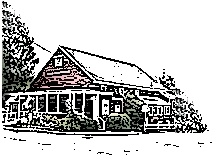 The best of summer stock theater played out in a former 1820 barn, now a charming red building with a white front porch right on Main Street in New London! Their mission statement summarizes perfectly what “The Barn” is: “The New London Barn Playhouse produces vibrant theater created by emerging artists in collaboration with accomplished professionals within, and in order to preserve, one of the most cherished and historic summer stock theaters in the country.” The New London Barn Playhouse is the “oldest, continuously operating, summer stock theater in New Hampshire” and is listed in New Hampshire’s Register of Historic Places. But, even more than that, it is the intimate experience in this small theater which makes it so special. Summer in New London wouldn’t be the same without the Barnies walking down Main Street and the opportunity to see really good summer stock theater right in our own community! Visit their web site at: WELCOME - NEW LONDON BARN PLAYHOUSE
The best of summer stock theater played out in a former 1820 barn, now a charming red building with a white front porch right on Main Street in New London! Their mission statement summarizes perfectly what “The Barn” is: “The New London Barn Playhouse produces vibrant theater created by emerging artists in collaboration with accomplished professionals within, and in order to preserve, one of the most cherished and historic summer stock theaters in the country.” The New London Barn Playhouse is the “oldest, continuously operating, summer stock theater in New Hampshire” and is listed in New Hampshire’s Register of Historic Places. But, even more than that, it is the intimate experience in this small theater which makes it so special. Summer in New London wouldn’t be the same without the Barnies walking down Main Street and the opportunity to see really good summer stock theater right in our own community! Visit their web site at: WELCOME - NEW LONDON BARN PLAYHOUSE
The Town of Sunapee shares its name with Lake Sunapee and Mt. Sunapee. The name itself comes from the Algonquin Indian words “suna” (goose) and “apee” (lake) chosen because the lake was a favorite spot of wild geese. The town was incorporated in 1781.
 Today, the Sunapee area
is a favorite of tourists and vacationers, but, historically, it was an industrial area. According to Wikipedia, one factory produced 110 clothespins a minute. Now the pristine lake, which was once surrounded by a number of grand hotels, is the main attraction. In the late 1800’s, when the summer grand hotels were still very active, there were a number of ferries on the lake, but these were mostly gone by 1915, replaced by the automobile.
Today, the Sunapee area
is a favorite of tourists and vacationers, but, historically, it was an industrial area. According to Wikipedia, one factory produced 110 clothespins a minute. Now the pristine lake, which was once surrounded by a number of grand hotels, is the main attraction. In the late 1800’s, when the summer grand hotels were still very active, there were a number of ferries on the lake, but these were mostly gone by 1915, replaced by the automobile.
The town has a total geographic area of approximately 25 square miles, with about 4 square miles of that being water. As of the 2000 censes, there were 3,055 people, 1,294 households, and 878 families residing in the town.
Sunapee Harbor bustles in the summertime with tour and dinner boats taking off on the lake, concerts in the bandstand, restaurants at water’s edge, and lots of pedestrian traffic in and out of the many shops and attractions. It’s a lively, fun place to be.
For more information about Sunapee, visit their web site at: Welcome to Sunapee, NH
 It won’t be very long before our thoughts turn to summer and getting out on the lakes. The Mt. Sunapee State Park Beach (603-763-5561) with a 900’ sandy beach on 4,085 acre Lake Sunapee is actually located in Newbury off Route 103 and provides the ideal opportunity to hold family and group outings and enjoy fishing, boating, swimming and picnicking. There is also a campsite which is located about a mile from the Beach. The Beach offers a store, canoe and kayak rentals, a playground, and a new bathhouse. A boat launch is available with some restrictions. The Campground has five renovated lean-to sites offering camping in a natural setting. There are also pit toilets and water, and each site has a picnic table and fire ring. Check out their website for additional information, including hours of operation, fees, etc. Mt. Sunapee State Park Beach - Newbury, NH
It won’t be very long before our thoughts turn to summer and getting out on the lakes. The Mt. Sunapee State Park Beach (603-763-5561) with a 900’ sandy beach on 4,085 acre Lake Sunapee is actually located in Newbury off Route 103 and provides the ideal opportunity to hold family and group outings and enjoy fishing, boating, swimming and picnicking. There is also a campsite which is located about a mile from the Beach. The Beach offers a store, canoe and kayak rentals, a playground, and a new bathhouse. A boat launch is available with some restrictions. The Campground has five renovated lean-to sites offering camping in a natural setting. There are also pit toilets and water, and each site has a picnic table and fire ring. Check out their website for additional information, including hours of operation, fees, etc. Mt. Sunapee State Park Beach - Newbury, NH
 The Ausbon Sargent Land Preservation Trust(ASLPT), located in New London, is a private, 501(c)(3) non-profit organization supported by 1,000+ members, which was founded in 1987 to preserve and protect the rural character of the Mt. Kearsarge/Lake Sunapee region for the public benefit. To date, ASLPT has protected 6,491 acres, consisting of 106 properties, and including 4,000 feet of shore front on Lake Sunapee. Because the organization plays a vital role in helping to preserve the special places, the views we all enjoy, and rural character of our area for the public benefit, Coldwell Banker Milestone is pleased to contribute a portion of every commission earned to ASLPT. The majority of these properties are preserved through conservation easements, but there are other ways to accomplish this as well. Methods of Land Conservation When the Trust accepts an easement, they also accept stewardship responsibilities, now and forever. In addition to helping families preserve their properties and safe-guarding them for future generations, ASLPT also devotes itself to educating the people of our communities about the importance to them of protecting our environment and its ecosystems through land conservation. Many of the open spaces in our communities which we all appreciate so much have been conserved through the efforts of their owners and ASLPT. For more information, visit their web site at: http://www.ausbonsargent.org/
The Ausbon Sargent Land Preservation Trust(ASLPT), located in New London, is a private, 501(c)(3) non-profit organization supported by 1,000+ members, which was founded in 1987 to preserve and protect the rural character of the Mt. Kearsarge/Lake Sunapee region for the public benefit. To date, ASLPT has protected 6,491 acres, consisting of 106 properties, and including 4,000 feet of shore front on Lake Sunapee. Because the organization plays a vital role in helping to preserve the special places, the views we all enjoy, and rural character of our area for the public benefit, Coldwell Banker Milestone is pleased to contribute a portion of every commission earned to ASLPT. The majority of these properties are preserved through conservation easements, but there are other ways to accomplish this as well. Methods of Land Conservation When the Trust accepts an easement, they also accept stewardship responsibilities, now and forever. In addition to helping families preserve their properties and safe-guarding them for future generations, ASLPT also devotes itself to educating the people of our communities about the importance to them of protecting our environment and its ecosystems through land conservation. Many of the open spaces in our communities which we all appreciate so much have been conserved through the efforts of their owners and ASLPT. For more information, visit their web site at: http://www.ausbonsargent.org/
 New London NH Neighbors…I was driving home from work last week coming off Main Street, past the library and down South Pleasant. It was early evening and a grayish kind of day. As I passed the raspberry man’s house, I caught a quick movement out of the corner of my eye. There between the two houses, out behind the raspberry patch, was a small group of whitetail deer foraging under the big pine and apple trees. Though I couldn’t get very close, I stayed and watched them for a while, while they actually watched me as well. They looked pretty “fat and happy”, as though they were weathering the winter fairly well. While not rare or unexpected, it’s still fun to see them (as long as they’re not eating your vegetables) and such sights continually remind me that, though short, my “commute” can still be full of interesting things to see.
New London NH Neighbors…I was driving home from work last week coming off Main Street, past the library and down South Pleasant. It was early evening and a grayish kind of day. As I passed the raspberry man’s house, I caught a quick movement out of the corner of my eye. There between the two houses, out behind the raspberry patch, was a small group of whitetail deer foraging under the big pine and apple trees. Though I couldn’t get very close, I stayed and watched them for a while, while they actually watched me as well. They looked pretty “fat and happy”, as though they were weathering the winter fairly well. While not rare or unexpected, it’s still fun to see them (as long as they’re not eating your vegetables) and such sights continually remind me that, though short, my “commute” can still be full of interesting things to see.
Sitting on my sofa on a chilly February morning, I look out my picture window and see my apple tree full of big fat robins. The first thing that pops into my head is that spring is just around the corner. I remember being in elementary school and learning and singing about the Red Red Robin that was a sign of spring, and soon we would have spring flowers green grass and rising temperatures. Initially I was excited, we have had a pretty dismal winter so far, and quite frankly I was looking forward to warmer weather, and spending more time outside, then my bubble was burst, I was told that these big fat robins are actually Canadian robins. I didn’t know there was a “Canadian” robin so I set out to do a little research.
Canadian robins are bigger and darker than the birds that we normally see here in New Hampshire. Wildlife biologists and birdwatchers say that robins are fairly common winter residents in New Hampshire. Robins are short-distance migrants, they lack the urge to fly far south each fall and are not overly ambitious. In the winter months, robins are likely to stay in large flocks where there is an abundance of fruit. They seek crabapples, mountain ash and any leftover berries that they can find. Robins can survive for several days if inclement weather prevents them from feeding because they carry fat reserves on their bodies. However, they may go further south if an ice storm or blizzard prevents them from finding food.
Apparently, New Hampshire may be balmy compared to northern Canada. While the Canadian robins are visiting us and enjoying the “warm” weather, I am no longer going to take their appearance as a sure sign that spring is right around the corner. So for now, I suppose I will listen to Punxsutawney Phil and plan for a longer winter, I will keep the long johns handy, the woodstove stoked and keep my eye out for a crocus peeking through the snow.

